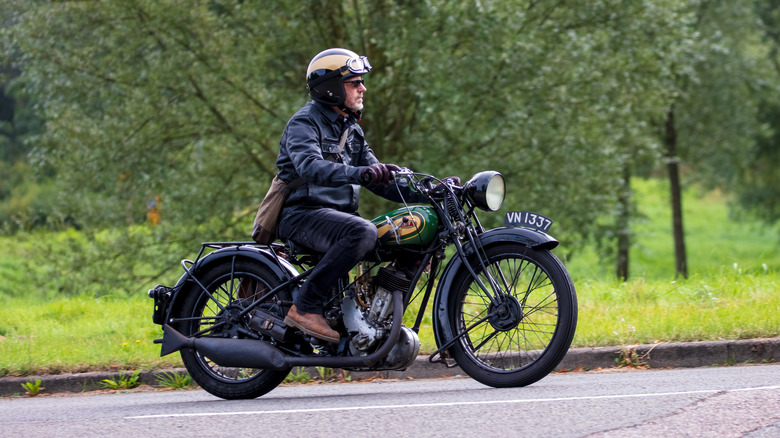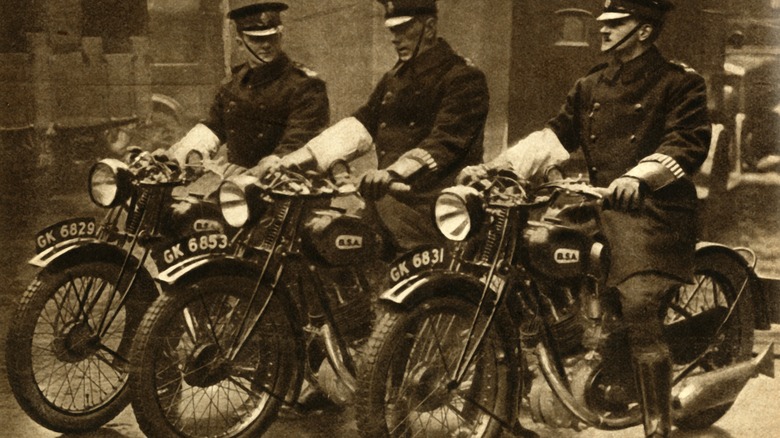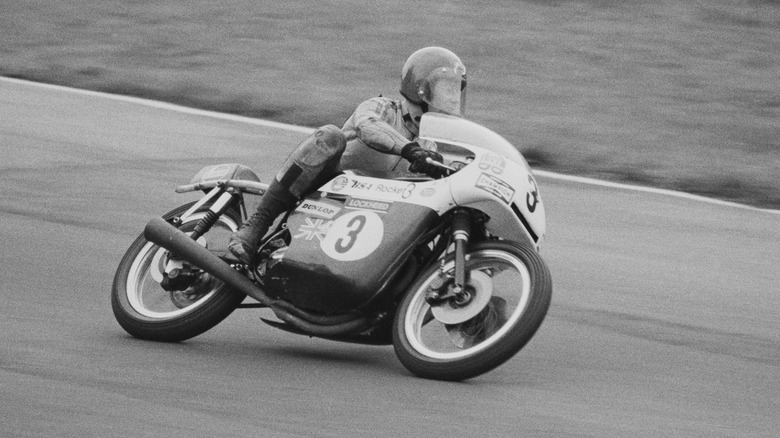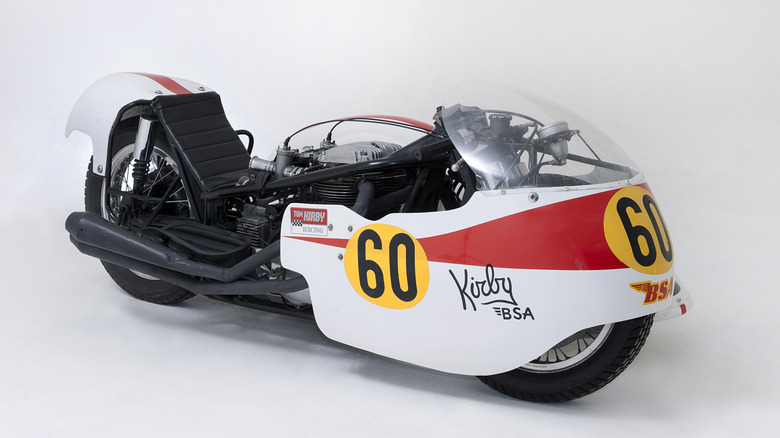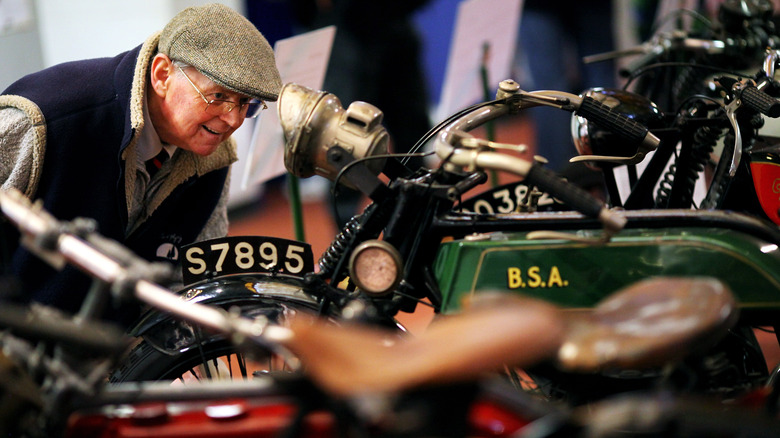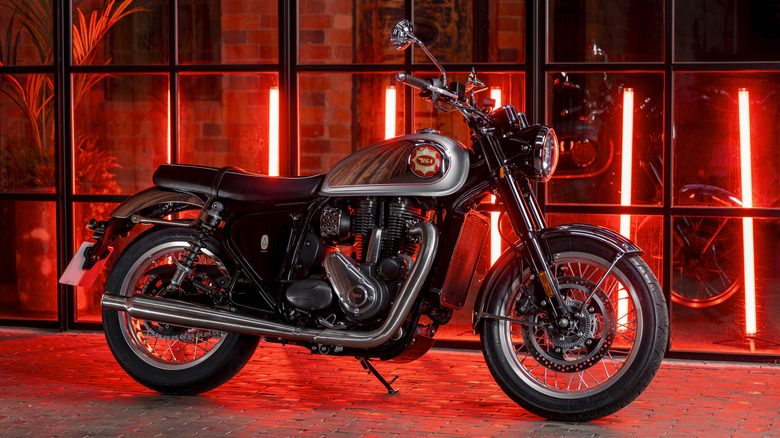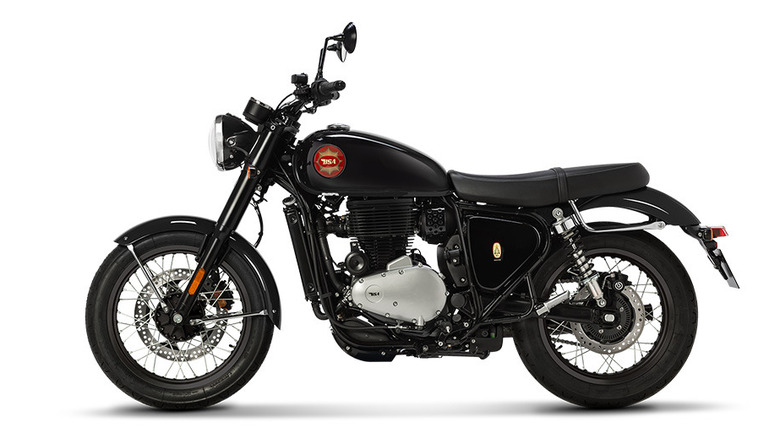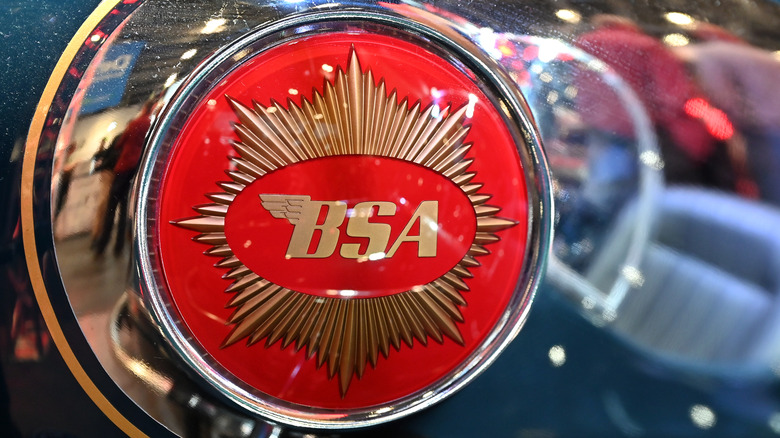Whatever Happened To BSA Motorcycles?
History has been tough on many major motorcycle companies, with some that have enjoyed true greatness experiencing financial difficulties that forced an untimely end to production. These include Vincent, makers of the legendary Black Shadow; Laverda, the marque behind the Jota, which was the fastest production motorcycle in the late 1970s; and the classic brands Norton and Indian, both of which were brought back to life, having ceased production in the new millennium. However, none of these experienced such a spectacular fall from grace as BSA.
BSA, or Birmingham Small Arms, was, like Royal Enfield, a British maker of firearms until it branched out to become the largest motorcycle manufacturer in the world. It remained among the top global marques for decades and went on to further success, acquiring Triumph in the mid-20th century before going bankrupt and folding in the 1970s. It has now reemerged under the ownership of Classic Legends, a subsidiary of Indian auto giant Mahindra, ushering in a new era of BSA bikes in a move that mirrors that of rival Royal Enfield, which also found great success on the subcontinent.
So, whatever happened to BSA motorcycles? How did such a globally influential brand suffer such a reversal of fortunes? And what kept the BSA dream alive for half a century after production stopped? Here, we look at the rise and fall of BSA, its recent revival, current product line, and outlook for the future.
BSA in the early years
The Victorian era was a fruitful time for the British Empire, as new manufacturing techniques and global spoils contributed to the nation's remarkable financial growth. International conflicts often serve to boost economies, and the English city of Birmingham was home to an alliance of craftsmen who provided munitions during the Crimean War of 1856. Birmingham Small Arms was established in the city's "Gun Quarter" in 1861 and later diversified into manufacturing other products, including bicycles. In keeping with emerging technologies, it established a motorcycle division in 1903 and produced its first motorcycle in 1910.
World War I saw the company join the war effort as a supplier of munitions and automobiles. Once again, the conflict proved to be a profitable period for BSA as the orders flooded in. Over 1.5 million rifles and Lewis machine guns rolled off the production line, accompanied by a host of ambulances, cars, and motorcycles. Suddenly, BSA was thrust into the big league of automotive companies. By the outbreak of World War II, it was manufacturing three- and four-wheeled cars and had greatly increased its motorcycle production, with several 350cc and 500cc single-cylinder models, such as the Silver Star and Gold Star, and some larger-capacity V-twin units.
World War II marked BSA's return to munitions manufacture, including supplying the Royal Air Force with Browning machine guns for its Spitfire fighter planes. Notably, it also produced over 125,000 M20 motorcycles for the war effort, further cementing its position as an important global marque within the industry. By the early 1950s, it had purchased the rival Triumph motorcycle company, and one-quarter of all motorcycles sold worldwide were BSA models.
Post-war prosperity and global success
As the world started to recover from the war, people required affordable transport for leisure and commuting, and BSA was well poised to meet the demand. The Gold Star and Bantam motorcycles were major sellers, and its A7 and A10 twin-cylinder models were solid prospects for the practical motorcyclist. As the 1950s merged into the 1960s, new designs, including the B Series of 350cc and 500cc units and the C series of smaller-capacity 250cc models, helped it rise to become the world's largest motorcycle manufacturer.
By this time, BSA was a significant contender in export markets, including the lucrative USA. Eighty percent of all British motorcycles sold domestically bore the BSA badge, and the brand's reputation was buoyed by its motorcycles' usage in several global militaries and police forces. While BSA was best known for its two-wheelers, the product line extended to cars, buses, industrial equipment, and agricultural machinery. Meanwhile, in media, the BSA A65 Lightning model made an appearance in the 1965 James Bond thriller "Thunderball," ridden by SPECTRE agent Fiona Volpe.
The 1968 Rocket 3 marked a positive step in BSA motorcycle production, as it was praised both for its reliability and performance, while its subsidiary, Triumph, was successful with its Trident and Bonneville models. The two marques teamed up on the racing circuit, dominating at the Daytona 200 in 1970 and further placing BSA on the map with the Rocket 3. It may have seemed that the global British brand was riding on the crest of a wave, yet it was not all smooth sailing for BSA: In reality, the 1960s marked the beginning of the end for the British brand.
The end of an era
Toward the end of the 1960s, the somewhat outdated BSA range was facing some serious competition from the East, as the "Big Four" Japanese motorcycle manufacturers — Honda, Kawasaki, Yamaha, and Suzuki, were making a huge dent in the British brand's market share. These machines' slick production methods, progressive features, improved fuel economy, and reliability meant that buyers got more bang for their buck, and their impressive performance was evident in competitive motorsports.
To counter the threat, BSA's response was to release several small- to mid-capacity single and twin-cylinder models, including trail and motocross units and the three-cylinder Rocket 3. Unfortunately, this lackluster solution, coupled with poor decisions in upper management, production problems, and some failed projects, including the Arial 3 tricycle moped, left the company with a trading loss of £3 million in 1971 (around $55 million U.S. dollars in 2024). The company was left with no choice but to start selling its assets.
By 1972, BSA was sliding toward bankruptcy, and the company was absorbed into Norton-Villiers as Norton-Villiers-Triumph, losing the BSA moniker in the process. Norton and Triumph motorcycles would continue to be manufactured under this new merger, and just four BSA models would be produced: the Gold Star 500, the 650 Thunderbolt, the 650 Lightning, and the Rocket 3. In 1973, all production of BSA motorcycles was stopped, marking the end of an illustrious 60-year history.
Continual interest and rebirth of BSA
Despite an unceremonious end to its motorcycle production, BSA continued to garner significant support from classic bike enthusiasts and collectors over the years. Indeed, its machines' scarcity likely boosted public intrigue in this fallen giant, as many changed hands in used markets, and careful restoration and preservation kept them on the road, especially in its native UK and the USA. The brand has always remained in the public consciousness, and the retro motorcycle segment has also experienced a considerable renaissance lately, thanks to brands like Royal Enfield, with models that include the Classic 350, Interceptor 650, and Continental GT.
Royal Enfield motorcycles continued to be made with great success in India after production dwindled in the United Kingdom in the 1960s. So it's perhaps unsurprising that the Indian company Classic Legends acquired BSA in 2016 and made plans to revive the brand in a similar move to that of its rival, albeit around 50 years later. Released in 2024, the New BSA Gold Star retained the classic appeal of previous generations of BSA motorcycles but with some modern features and solid build quality. As if from nowhere, a new chapter in the BSA story was about to be written.
BSA is born again
The re-emergence of BSA under Mahindra's stewardship as a significant contender in the modern retro bike segment has been slow and steady. As the parent company of Classic Legends, the latter has also purchased the Czech brand Jawa, makers of the Kývačka series, further establishing itself as an important revivalist in the modern retro renaissance.
In keeping with BSA's heritage, Classic Legends wished to take the brand back to its roots by establishing a production line in the UK. However, the global pandemic and the home country's awkward political situation as a result of Brexit thwarted these plans so, for now at least, BSA motorcycles will be produced in India. This is no bad thing, as India has a long and distinguished history of making modern retro bikes, and it means that, finally, we have seen the first BSA motorcycles realized half a century on.
Reviving a highly respected classic bike brand was no small feat, especially at a time of global instability and economic downturn, but BSA has pulled it off, creating its first motorcycle from the ground up. After some deliberation, the company decided to brand it as the new Gold Star, a nod to the enduring flagship model that helped carry the brand from 1938 to 1963. As it turns out, this was a shrewd decision, as it generated significant interest in the company's transition from past to present.
The new edition
With the BSA Gold Star, the company was putting all its eggs in a single proverbial basket, or pannier, if you will. It had to live up to the reputation of past glories while appearing fresh and in keeping with the expectations of modern riders. It also had significant competition, especially from Royal Enfield, whose updated product line was already well-established and making waves in North America. Its chief rival would be the RE Interceptor 650, a modern classic roadster with an upright riding position and a comparable engine capacity and price point. This bike was already well-respected in biking circles as an affordable alternative to a Triumph Bonneville, with a relaxed performance and impressive handling.
Interestingly, unlike the twin-cylinder Interceptor, BSA decided upon a single-cylinder engine for its inaugural machine, in keeping with the original Gold Star models, although the brand did release the A10 Rocket Gold Star twin-cylinder motorcycle in 1963. The bike looks the part with familiar aesthetics, and the hallowed BSA badge is proudly displayed on the fuel tank. There's a good amount of chrome here to catch the eye — and watermarks when it rains — and the bike boasts modern features while still retaining its retro charm.
These features include quality Brembo disc brakes, electronic fuel injection, liquid cooling, and a preload-adjustable rear suspension. Other useful additions include an LCD set into the headlamp cowling for fuel and trip data and a USB port for keeping devices charged, although this might have worked better aesthetically if it were more concealed. However, on the whole, the new Gold Star looks and handles like a BSA should, with a satisfying thump from the single-cylinder block, a decent amount of torque, and enough period features to remind you of its heritage.ac
The future outlook for BSA
The future of BSA should be bright, buoyed by the current wave of interest in the modern retro segment, and with plenty of resources at its fingertips, courtesy of its parent company, Mahindra. There has evidently been a lot of passion and skill invested in bringing the company back to life, and the company is already thinking in terms of a more progressive product line in keeping with current market trends.
These include an interest in EV technology, and a fully-electric successor to the Gold Star has been discussed. It would be interesting to see how the company could combine 21st-century tech with the retro image that the brand is known for, as this would prove to be a significant departure from the current tried and true single-cylinder Gold Star model.
Whether BSA will reach the upper echelons of the modern retro segment, alongside such venerated brands as Royal Enfield, Triumph, and a newly regenerated Norton, remains to be seen. However, the initial reception of the Gold Star has been positive, with solid reviewer and owner ratings from the riding authority Motorcycle News. Perhaps most importantly, it paints a bigger picture of the industry as a whole and a post-pandemic motorcycling public that is eager to get out on the road and enjoy fair-weather biking without breaking the bank.
